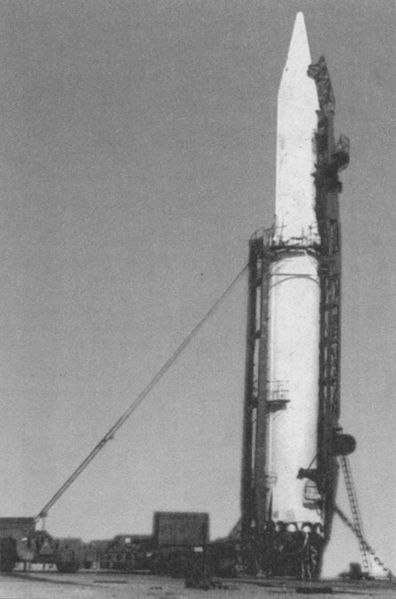RT-21 (SS-16 Sinner) Russian Intercontinental Ballistic Missile
Four new missile systems were in flight test in the early 1970s, all embodying completely new techniques and much more "unstoppable" than their predecessors, and all were times to reach IOC in 1975. Of these SS-16 (then called SSX-16, because of its development status) is the only one with solid propulsion. It is universally regarded as a much superior replacement for SS-13, similar in size (the DoD said it is "slightly smaller" but the Pentagon artwork and the desk-top models show it rather larger) but with such superior motor performance as to give greater range despite a considerably heavier warhead. Until mid-1978 all operational SS-16s were believed to carry a single warhead, with yield estimated at 1.5-2 megatons, but from the early test period this missile was known to have a computer-controlled "dispensing bus" able to release MIRVs sequentially on to widely separated targets.
A three-stage missile, SS-16 has multiple (probably quad) nozzles and used the traditional hot launch technique. It is suitably configured for either silo or mobile deployment, and there is every reason for assuming that the Soviet Union tested a transport/erector suitable for such formidable missiles as SS-16 and possibly even larger weapons. In mid-1978 this missile was at last reported to have been deployed; previously the DoD view was that it had been manufactured in quantity and stored, possibly together with complete mobile weapon systems so that if politically desirable it could be put into large-scale service very rapidly. There were indication that all 60 SS-13 silos were receiving SS-16s. Its two upper stages are used as the mobile SS-20.
